The cloak of darkness transforms the natural world, revealing a hidden realm where specialized hunters reign supreme. As the sun sets, an entirely different cast of predators emerges to take center stage in the eternal dance of survival. These nocturnal hunters have evolved remarkable adaptations that allow them to excel in low-light conditions, giving them significant advantages over their prey. From stealthy cats with reflective eyes to silent-flying owls and elusive deep-sea predators, the night belongs to these masterful hunters. This exploration of 15 wild predators that hunt at night reveals the fascinating adaptations, hunting strategies, and evolutionary advantages that make these creatures such effective nocturnal hunters.
The African Lion Surprising Night Hunter
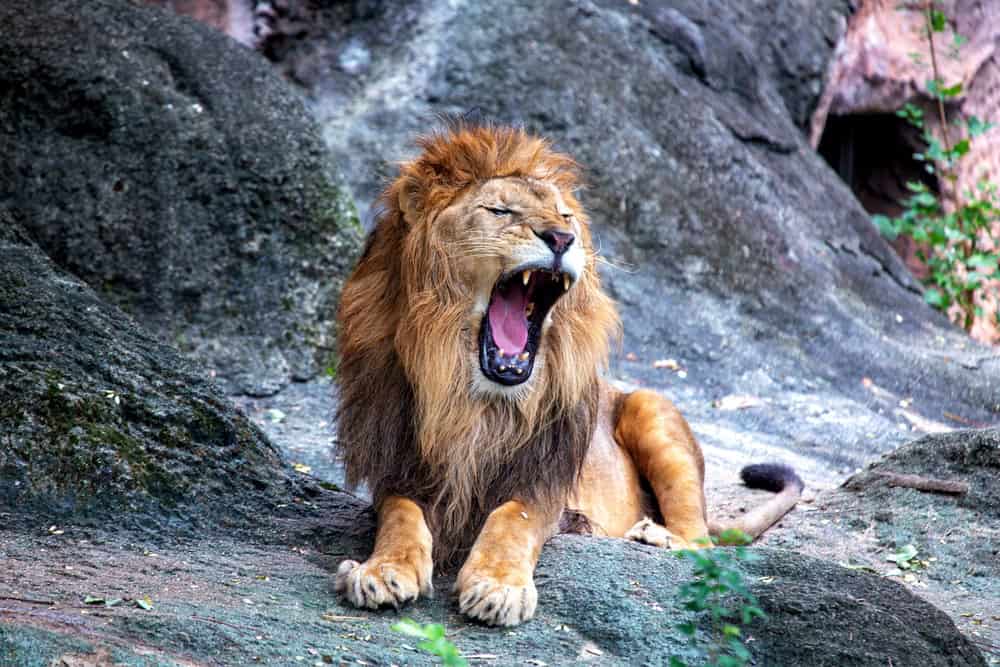
Contrary to popular belief, lions conduct nearly 60% of their hunting activities during nighttime hours. While we often picture these majestic cats lounging in the savanna sun, they’re actually formidable nocturnal predators. Lions possess a reflective layer behind their retinas called the tapetum lucidum, which enhances their night vision by reflecting light back through the retina, giving them up to six times better night vision than humans. Their large pupils further maximize light collection in dim conditions. Lions strategically use darkness to conceal their approach when hunting large prey like zebra, wildebeest, and buffalo. Their cooperative hunting behavior becomes particularly effective at night, when they can coordinate ambushes with greater stealth. The distinctive roars that carry for miles across the savanna are most frequently heard at night, serving both as territorial claims and to coordinate group movements during these crucial hunting hours.
Barn Owls Silent Night Assassins

Barn owls represent one of nature’s most perfect nocturnal hunting machines. Their exceptional hearing allows them to locate prey by sound alone, even in complete darkness. This remarkable ability stems from asymmetrically placed ear openings – one higher than the other – creating microsecond differences in sound arrival times that the owl’s brain interprets as precise spatial information. Research has shown barn owls can accurately pinpoint sounds within 1-2 degrees of their actual location. Their distinctive heart-shaped facial discs function as parabolic sound collectors, channeling sounds to their ear openings. Perhaps most impressive is their silent flight, made possible by specialized feather adaptations including serrated leading edges, flexible fringes on flight feathers, and velvety surfaces that virtually eliminate the sound of airflow over their wings. This silent approach allows them to hear the faintest sounds of mice rustling beneath leaves while remaining completely undetected until the final moment of capture.
Leopards Masters of Darkness

Leopards epitomize nocturnal hunting excellence, with studies showing they’re up to 40% more successful when hunting at night compared to daylight hours. These solitary cats possess extraordinary night vision, with pupils that can dilate drastically to maximize light capture. Their tapetum lucidum is particularly effective, giving their eyes the characteristic green-gold eyeshine when caught in light. Leopards hunt using a patient stalk-and-pounce approach, relying on their rosette-patterned coats for perfect camouflage in dappled moonlight and shadows. Unlike many predators, leopards regularly hoist their kills into trees, a behavior that peaks during nighttime hunts as it helps them avoid competition from other nocturnal scavengers like hyenas. Their strength is phenomenal – a leopard can carry prey up to three times its own weight into a tree. With excellent climbing abilities and acute senses, leopards reign as apex predators across their range, from African savannas to Asian forests, with most of their hunting dominance occurring under the cover of darkness.
Great Horned Owls Nighttime Aerial Predators
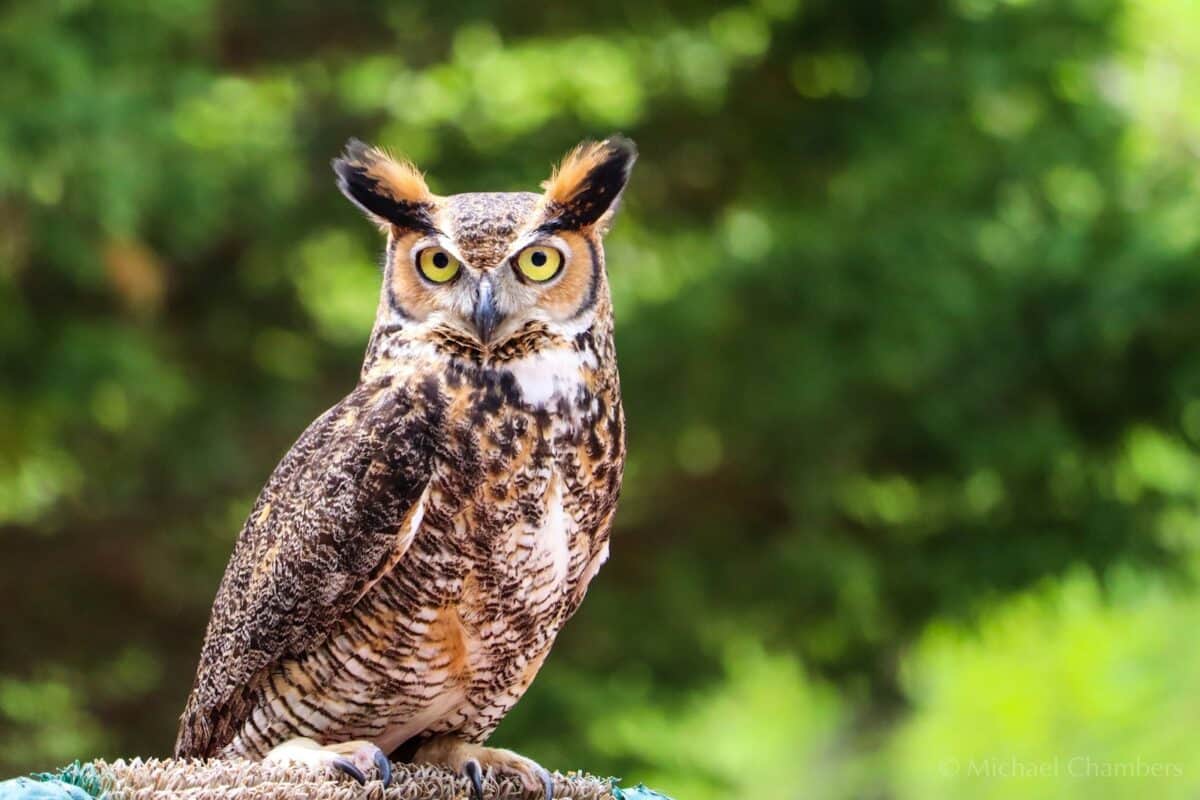
Great horned owls are North America’s tiger of the sky, conducting almost all their hunting between dusk and dawn. These powerful birds can exert crushing force with their talons – up to 500 pounds per square inch – allowing them to take down prey significantly larger than themselves, including skunks, raccoons, and occasionally other raptors. Their large eyes contain an extraordinary concentration of rod cells specialized for low-light vision, allowing them to detect movement in light levels 100 times dimmer than what humans require. Unlike barn owls that rely primarily on hearing, great horned owls employ a more balanced approach using both exceptional vision and directional hearing. Their distinctive “horns” are actually feather tufts and play no role in hearing but may help break up their silhouette or signal to other owls. These apex aerial predators maintain large territories that they defend vigorously after sunset, with their deep, resonant hooting serving as territorial announcements to potential competitors. Their hunting success rate can exceed 85% on moonlit nights, making them one of North America’s most efficient nocturnal predators.
Coyotes Adaptable Night Hunters
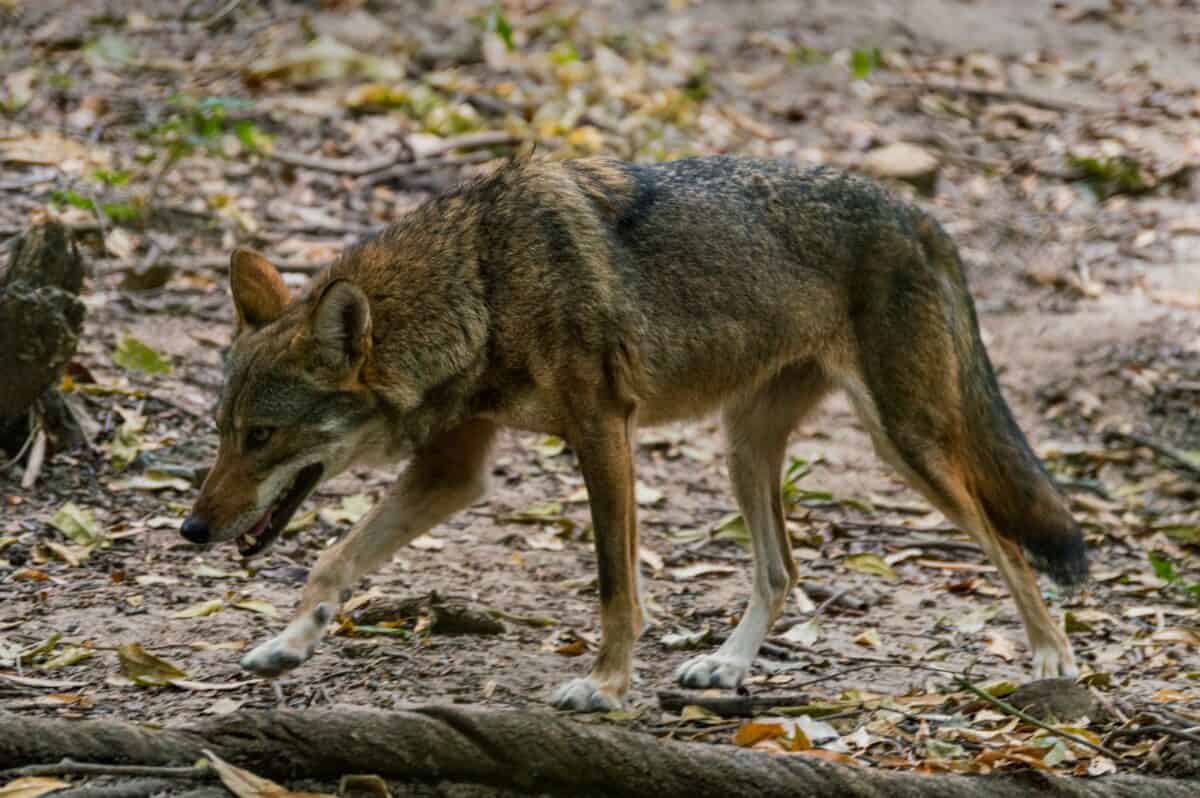
Coyotes have dramatically expanded their range across North America partly due to their exceptional adaptability as nocturnal hunters. In urban and suburban environments, they’ve shifted to almost exclusively nighttime hunting to avoid human activity. Their night vision, while not as specialized as some predators, is complemented by extraordinary hearing that can detect rodents moving under snow or leaves at considerable distances. Coyotes possess approximately 220 million olfactory receptor cells in their noses compared to a human’s 5-6 million, giving them scenting abilities roughly 40 times more powerful than ours. They employ flexible hunting strategies depending on prey and conditions – hunting alone for small mammals like mice and rabbits but forming coordinated packs to pursue larger prey like deer, especially during winter nights. Research tracking urban coyotes has revealed they become most active approximately two hours after sunset, with activity peaks occurring around midnight. Their diverse diet includes fruits and vegetables alongside animal prey, making them true omnivorous opportunists. This dietary flexibility combined with primarily nocturnal habits has allowed coyotes to thrive even in highly developed areas where they navigate complex urban landscapes under the cover of darkness.
Tasmanian Devils Nighttime Scavengers

The Tasmanian devil, despite its small size, ranks among the most voracious nocturnal predators in Australia. These marsupial carnivores spend daylight hours in dense brush or burrows before emerging at dusk to begin hunting and scavenging. Possessing the strongest bite force relative to body size of any living mammal – measured at up to 553 Newtons (comparable to dogs four times their weight) – devils can crush bones completely, consuming every part of their prey including fur, organs, and skeleton. Their powerful jaws and robust teeth allow them to access nutrition sources unavailable to many competitors. While commonly viewed as scavengers, research has shown they actively hunt small mammals, birds, reptiles, and amphibians during nighttime hours. Devils have relatively poor eyesight but compensate with acute hearing and an extraordinary sense of smell that can detect carrion from kilometers away. They exhibit a feeding behavior known as “carrion surfing,” traveling up to 16 kilometers (10 miles) nightly along established routes checking potential food sources. Their distinctive screams, growls, and hisses heard throughout the night serve as communication during feeding and mating. Unfortunately, a contagious facial tumor disease has decimated wild populations by over 80% in recent decades, making conservation of these unique nocturnal predators increasingly urgent.
Grey Wolves Coordinated Night Hunters

Grey wolves epitomize cooperative nocturnal hunting, with packs showing increased hunting activity during twilight and nighttime hours across their range. Their vision is specifically adapted for low-light conditions, with eyes containing a high percentage of light-sensitive rod cells and a highly reflective tapetum lucidum that maximizes light use. More impressive is their integrated sensory approach – wolves combine vision with hearing that can detect prey from over a mile away and olfactory capabilities estimated at 100 times more sensitive than human smell. Pack hunting reaches peak efficiency at night, when wolves employ sophisticated strategies including ambushes, relay chases, and sentinel positioning to exhaust and isolate prey. Studies in Yellowstone National Park have documented successful elk hunts increasing by approximately 30% during nighttime versus daytime attempts. Wolves can sustain pursuit for hours in darkness, maintaining communication through vocalizations that carry for miles in the night air. Their night hunting has evolved partly in response to human pressure – research shows wolf packs in areas with higher human activity shift to more nocturnal patterns, sometimes becoming almost entirely night-active. This adaptability has helped wolves begin recovering in parts of their historic range despite continued challenges.
Crocodiles Ancient Nocturnal Predators
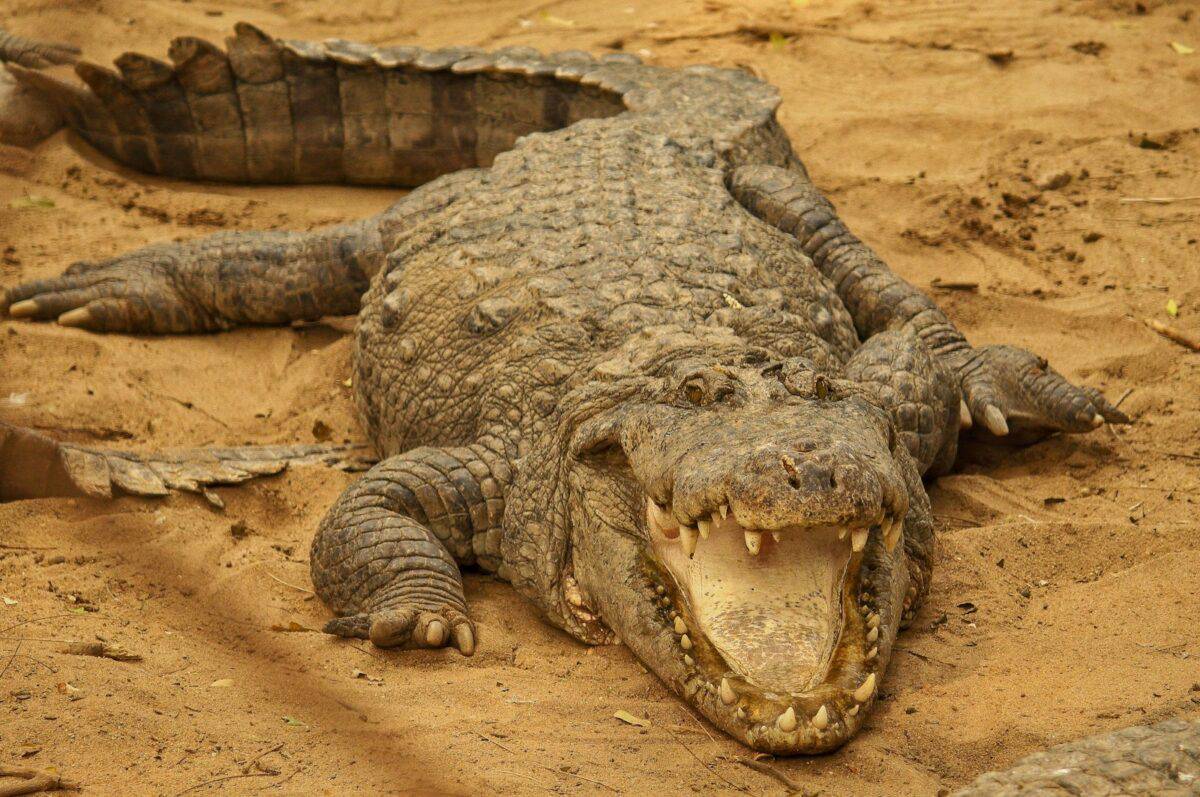
Crocodiles represent one of evolution’s most successful nocturnal hunting designs, virtually unchanged for over 200 million years. These ancient reptiles conduct approximately 70% of their hunting during nighttime hours, particularly in equatorial regions. Their eyes contain a high concentration of rod cells along with a specialized tapetum lucidum that creates the distinctive red eyeshine visible when light hits crocodile eyes at night. Pressure-sensitive organs called integumentary sense organs (ISOs) dot their skin, allowing them to detect minute pressure changes in water caused by potential prey movements, even in complete darkness. Large species like Nile and saltwater crocodiles employ the “death roll” hunting technique at night, grabbing prey at the water’s edge and spinning underwater to disorient and drown victims. Their bite force has been measured at up to 3,700 pounds per square inch – the strongest of any living animal. Crocodiles show remarkable patience, sometimes remaining motionless for hours until prey approaches, a strategy particularly effective at night when their submerged profiles become nearly invisible. Nighttime hunting success rates can reach 50% compared to approximately 10-20% during daylight hours for many species. Their cold-blooded metabolism contributes to their nocturnal nature, as night hunting allows them to avoid temperature extremes while targeting prey when it’s most vulnerable.
Fishing Cats Specialized Aquatic Night Hunters
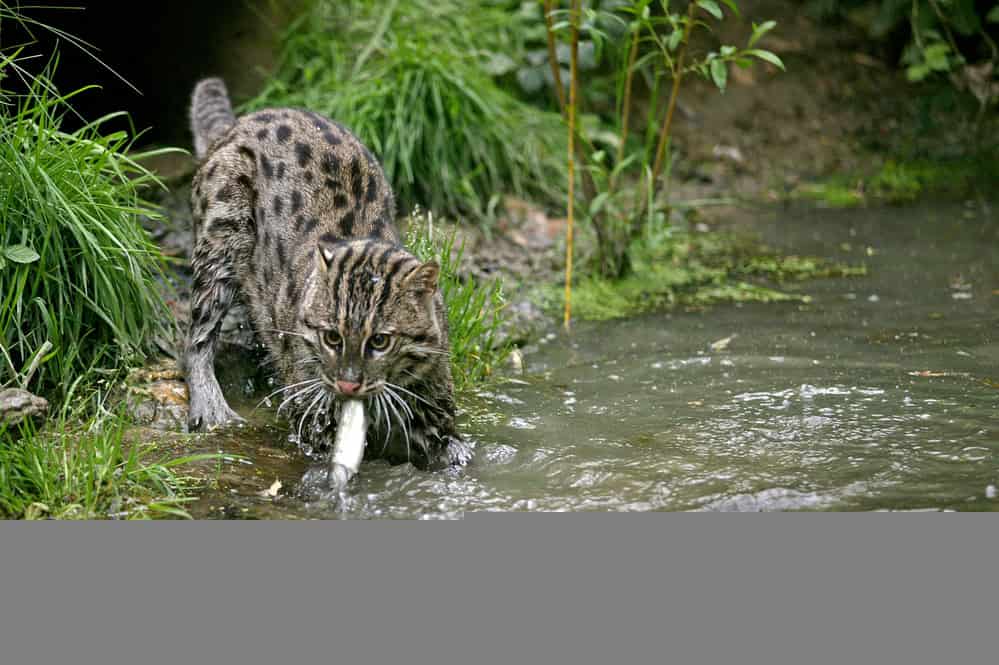
Fishing cats have evolved as Southeast Asia’s most specialized nocturnal aquatic hunters among felids. These medium-sized wild cats conduct over 90% of their hunting during nighttime hours in wetland habitats. Unlike most cats, they show remarkable comfort in water with partially webbed feet, water-resistant fur with a dense undercoat, and the ability to swim underwater to pursue fish. Their eyes contain an unusually high density of rod cells along with a highly reflective tapetum lucidum, providing exceptional night vision in murky wetland environments. Fishing cats employ a unique hunting technique – tapping the water’s surface with their paws to mimic insect movement, attracting fish that they then capture with lightning-fast strikes. They can also dive to depths of several feet to catch prey directly. Research has shown fishing cats make extensive use of emergent vegetation for concealment during night hunts, stalking from reeds and lily pads. Their short, muscular tails provide stability and steering during swimming, unlike the balancing function of most feline tails. Conservation studies indicate fishing cats face significant threats from wetland degradation, with over 50% of suitable habitat lost in the past few decades across their range. Their highly specialized nocturnal hunting adaptations make them particularly vulnerable to habitat disruption as they cannot easily adapt to alternative hunting strategies or habitats.
Vampire Bats True Nocturnal Blood Hunters

Vampire bats represent nature’s only exclusively hematophagous (blood-feeding) mammals, conducting their specialized hunting exclusively at night. Found in Latin America, these small bats locate sleeping prey – typically livestock or wild mammals – using a remarkable suite of sensory adaptations. They possess specialized thermoreceptors in their noses that can detect the heat signatures of blood vessels near an animal’s skin surface from up to 20 centimeters away. Their saliva contains unique anticoagulant compounds including draculin, which prevents blood clotting during feeding sessions that typically last 20-30 minutes but can extend to 40 minutes for the common vampire bat. Research has documented remarkable social behaviors connected to their nocturnal feeding – hungry bats that fail to find meals can receive regurgitated blood from successful roostmates, with bats preferentially sharing with regular reciprocators in a primitive “blood for blood” exchange system. Their specialized feeding approach involves landing near prey, moving stealthily on surprisingly agile limbs, making a small incision with razor-sharp teeth, and lapping blood without waking their victims. Far from the mythological creatures they inspired, these nocturnal specialists rarely take more than a tablespoon of blood per feeding – not enough to harm most prey but sufficient to sustain the bat’s high-energy needs. Their feet and leg anatomy has evolved specialized adaptations for terrestrial movement, making them the most efficient walkers and runners among all bat species.
Tarsiers Tiny Nocturnal Hunters
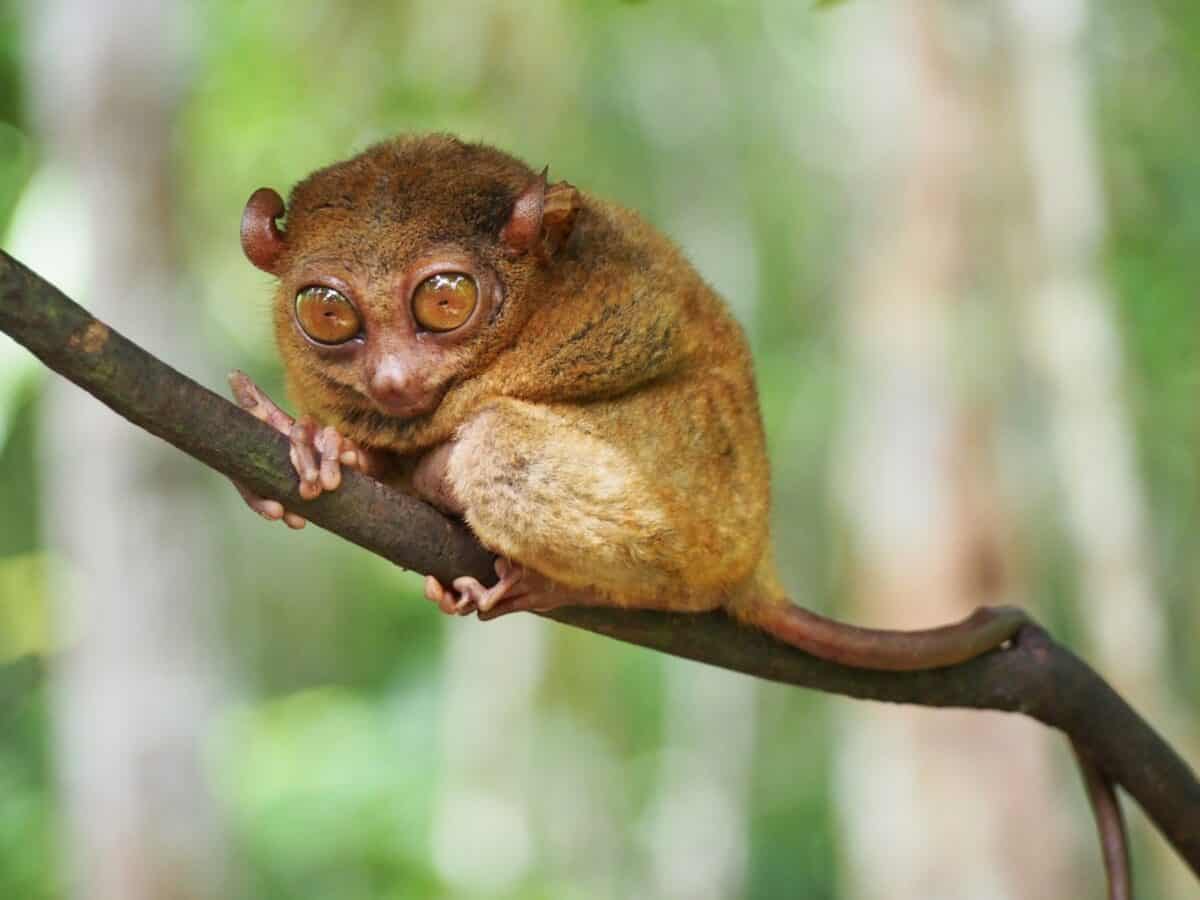
Tarsiers may be diminutive – typically weighing less than 150 grams – but these ancient primates are formidable nocturnal predators in Southeast Asian forests. They possess the largest eyes relative to body size of any mammal, with each eyeball approximately the same size as their brain. These enormous eyes lack the reflective tapetum lucidum found in many nocturnal hunters, instead relying on an extraordinary density of rod cells – over 300 million per square centimeter – that provides exceptional light sensitivity. Unable to move their eyes within their sockets, tarsiers can rotate their heads nearly 180 degrees in either direction, providing a full 360-degree field of vision. Studies show tarsiers are exclusively carnivorous – the only primates with this distinction – focusing their hunting on insects, small reptiles, birds, and even venomous snakes. Their oversized ears can independently rotate to track sounds, allowing precise acoustic location of prey moving through nighttime forests. When hunting, tarsiers employ powerful hindlimbs that enable vertical leaps of up to 40 times their body length to capture flying insects or prey on higher branches. Their fingers and toes feature specialized pads and “toilet-claw” grooming digits that aid in gripping branches during nocturnal hunting expeditions. Recent research suggests tarsiers may use ultrasonic communication beyond human hearing range, potentially serving both social purposes and prey detection in their nighttime hunting strategies.
Foxes Adaptable Nocturnal Omnivores

Foxes across numerous species have mastered the art of nocturnal hunting through adaptability rather than extreme specialization. The red fox – among the most widespread terrestrial carnivores globally – conducts approximately 70% of its hunting between dusk and dawn. Fox night vision benefits from a tapetum lucidum that reflects light back through the retina, significantly enhancing light capture in low conditions. Even more impressive is their hearing, capable of detecting sounds as low as 45 Hz and as high as 65 kHz (far exceeding human range), allowing them to hear rodents moving underground. Research has documented red foxes locating mice beneath 2 feet of snow using solely acoustic information, then performing precisely calculated “mouse pounces” to break through snow and capture prey with surprising accuracy. Studies tracking foxes with GPS collars show they typically cover 5-9 miles nightly in hunting circuits through their territories. Unlike strict carnivores, foxes employ an omnivorous nocturnal foraging strategy, consuming fruits, berries, and grains alongside animal prey, with the plant proportion increasing significantly during certain seasons. Urban fox populations have become increasingly nocturnal, with studies in British cities finding fox activity peaks between 1-3 AM when human activity reaches minimum levels. This temporal adaptation has contributed significantly to fox success in human-dominated landscapes, where they’ve established sustainable populations by concentrating activity when potential conflicts with humans are minimized.
Bats Echo-Navigating Night Hunters

Bats represent the pinnacle of evolutionary adaptation for nocturnal hunting, with over 1,400 species occupying night-flying niches worldwide. Most insectivorous bats employ sophisticated echolocation – emitting high-frequency calls up to 200 times per second and analyzing the returning echoes to create detailed acoustic maps of their surroundings. This biological sonar allows them to detect objects as thin as a human hair in complete darkness. Research using high-speed cameras has revealed insect-hunting bats can process spatial information and adjust flight paths in under 100 milliseconds when pursuing evasive prey. Their hunting efficiency is remarkable – a single little brown bat can consume up to 1,000 mosquito-sized insects hourly during peak feeding times. While many bats target insects, specialist night hunters have evolved across the order. Frog-eating bats locate prey by homing in on amphibian mating calls, while fish-hunting bats detect ripples and fish breaking the water’s surface using specialize
- The Secret Lives of Domestic Cats What Every Cat Lover Needs to Know - August 14, 2025
- 15 Wild Predators That Hunt at Night - August 14, 2025
- 12 Wild Creatures That Live Their Entire Lives Underground - August 14, 2025

